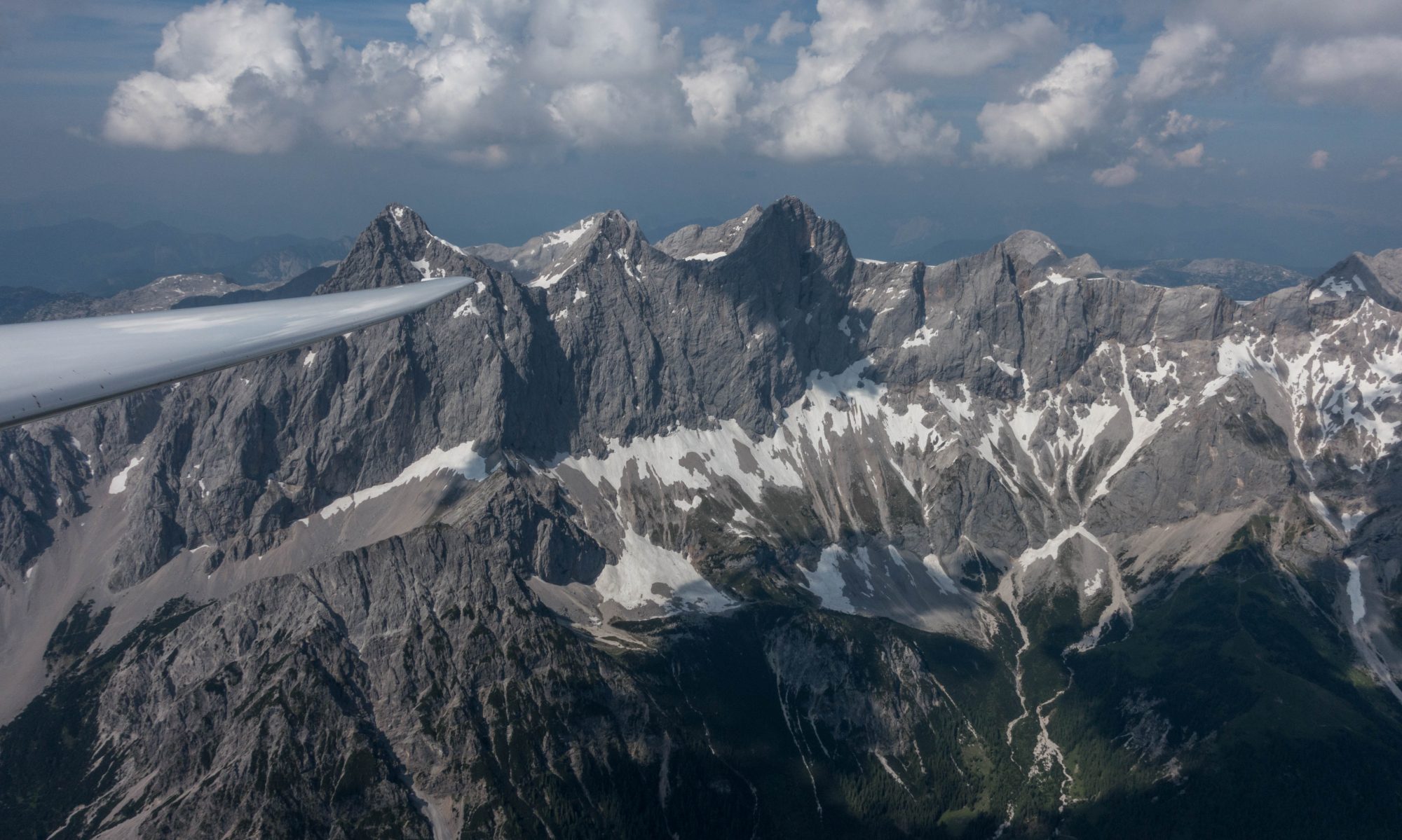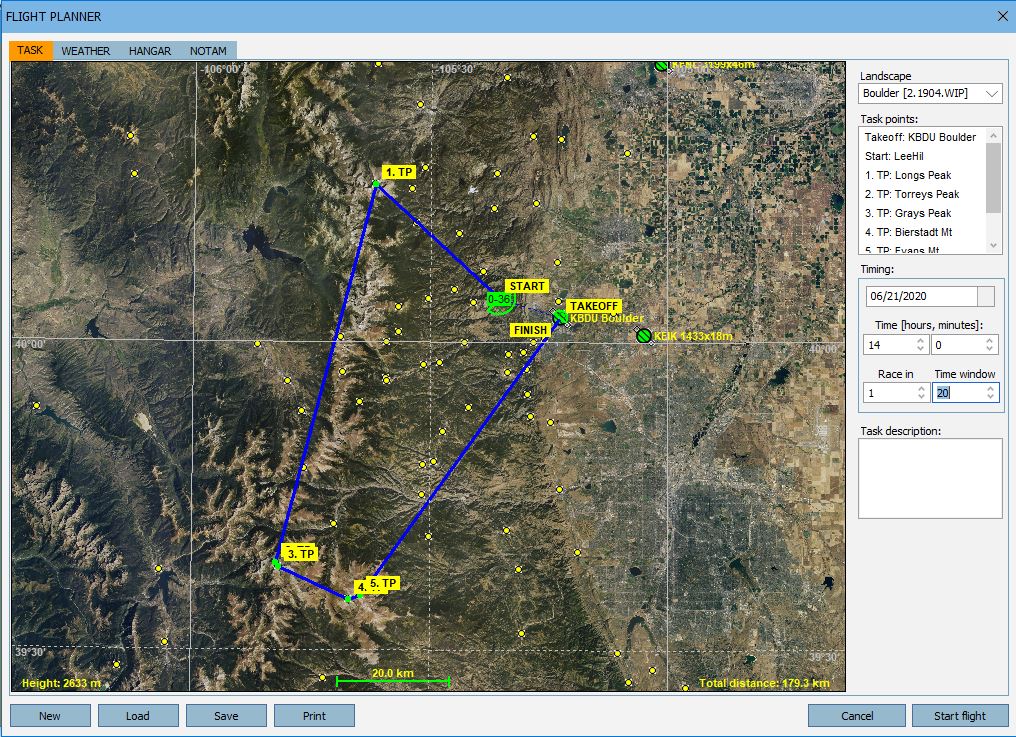The Virtual 14er Safari Cup is a series of nine Condor tasks (plus one practice task) that will take us across the entire state in a “Soaring Safari”. We will start in Boulder, fly above one or more 14ers and land at another airport. The next task will start where we left off, explore another mountain range, and finish at another airport.
Each task will take about 1-2 hours to complete, and over the course of the safari we will visit all of Colorado’s 14ers (except for Culebra Pk which is beyond our Boulder Condor scenery) and land at different airports all across the state. The entire tour will take nine flights.
This Thursday (May 28) we will do our practice task which will be the only one where we land back in Boulder. We will fly above the five 14ers that can be reached within gliding distance from Boulder: Longs Peak, Torrey’s, Gray’s, Mt Bierstadt, and Mt Evans. Next week, we will get our safari underway in earnest by starting in Boulder, flying to Pikes Peak and finishing in Cañon City. From there we will explore the Mosquito Range and land in Buena Vista and so forth. Eventually we will get back to Boulder.
Overall Settings
All flights will be set up as racing tasks and each 14er will be set up as a turrnpoint with a 360 degree turn cylinder and a 500 meter radius. Thermal helpers (the magic “H” key) will be enabled but if you want to have a competitive score try not to use them as their use carries a per-minute penalty. Plane and height recovery (the magic “Q” key) will also be enabled so everyone can finish all flights. But using them obviously also carries a hefty point penalty. Turn point helpers (the magic “J” key) will also be enabled and using them carries no penalty. All flights will begin airborn. However, note that the start may be a bit removed from the release location. If that’s the case, make your way towards the start area after release and look for climbs along the way. The virtual start time for all tasks is 2 PM in the afternoon, i.e., close to peak conditions. The start window will be open for 20 minutes.
Start and finish line will be set up as half cylinders as they have been for most of our club flights so far. However, in true Condor racing fashion there will be no minimum finish altitude so you can finish with a low high speed pass “on the deck”, pull up and land. The maximum start height varies from task to task so make sure to take note of that before you start! Also, always remember that VnE at altitude is well below the red line on the ASI.
Please note: due to the fact that we are dealing with a Beta version of the Condor scenery, many airports have not been specifically set up for Condor. This means that you may find uneven runways or vegetation on the airport, and aerotowing or winch-launching out of such airports will not be possible either. (This is one reason why all our starts will be airborne.) Should you damage your plane after you completed the task and need to press the “Q” key, no penalties are assigned. (Condor only assignes penalties from the moment you join the flight (even pre-start) until you cross the finish line.)
Scoring
I will score each flight individually, and the aggregate scores of each pilot across all tasks will count for the Virtual 14er Safari Cup. (The practice task will also be scored but it will not count for the overall results.)
If you can’t participate live in a specific flight, you can complete the task within the next few days offline and send me your score by the end of Tuesday the following week. You can even fly the same task again if you like and then send me your best score by Tuesday. This way everyone gets a chance to fly all tasks and we will all develop a good sense of Colorado’s geography which is the main purpose of this series (in addition to having fun).
To get your flights scored you must email me the .igc file of your flight. Please do so right away after the group flight and if you decide to refly you can send me a new score by the end of the following Tuesday. (I will not be chasing everyone for their scores!) Instructions for saving your flight as an .igc file are here.
Weather
The weather will be reliable strong thermal soaring weather with high cloud bases throughout the entire series. However, conditions will differ somewhat from flight to flight. Be careful to look through the Flight Planner as soon as you download the flight from the server and note the wind direction and strength, thermal height and width, thermal activity, streeting, turbulence, etc.
Glider
You can pick any glider you want and and you can fly with or without ballast. You can fly a glider that is similar to what you use in real life, or you can use the latest and fastest racing machine. All scores are handicapped. Note that there is no handicap associated with the use of ballast, so flying with water will tend to give you a better score if weather conditions are favorable (and they are).
Teamspeak
Please join on Teamspeak – it makes for a more fun experience for everyone. Instructions are here.
Joining Races in Multiplayer Mode
The SSB server starts around 5:30PM on Thursdays and stays open for joining for about 10 minutes. Instructions are here.
Offline Racing (on your own time)
After each race, I will post the flight plan for each flight on this page. This is where you can find all our club flights. Look for files with the name “SSB 14er Tour” and numbers 01 to 10. Flights will only be posted after the multiplayer race. Look for the one with the highest number – it should be the most current one.
Once you found it, download the flight plan and play the race on your own time. Then save the score and email it to me as an .igc file. Files that I receive by Tuesday night following the day of the race will get scored and count for the Virtual 14er Safari Cup.
New Participant?
If you’re new to Condor or want to join our flight series this page is a good place to start.
If you haven’t installed the Boulder scenery, you can find instructions here.


